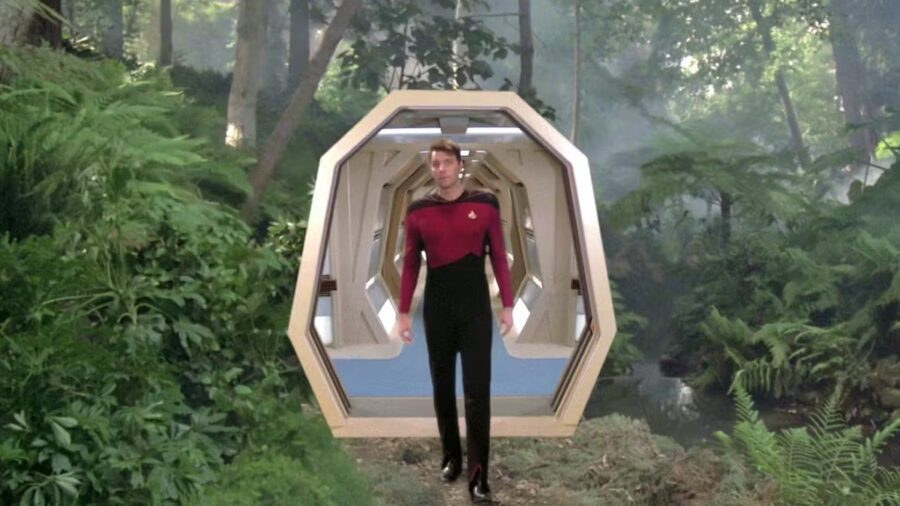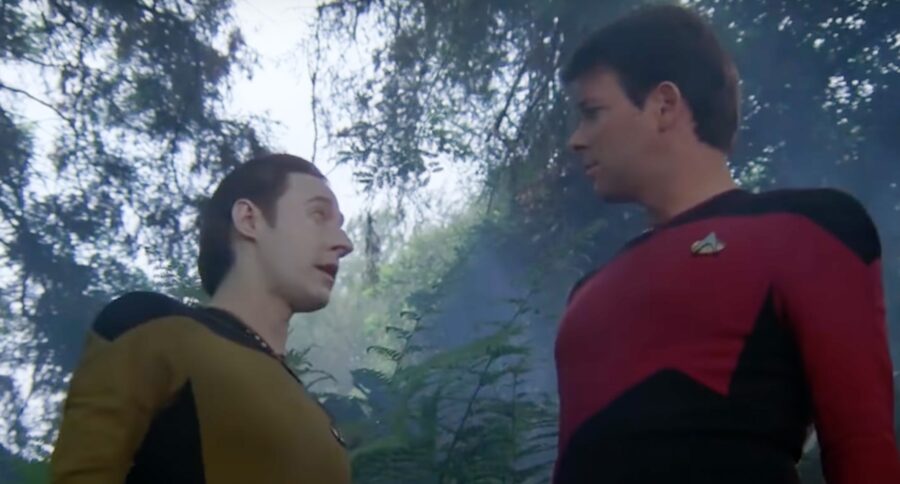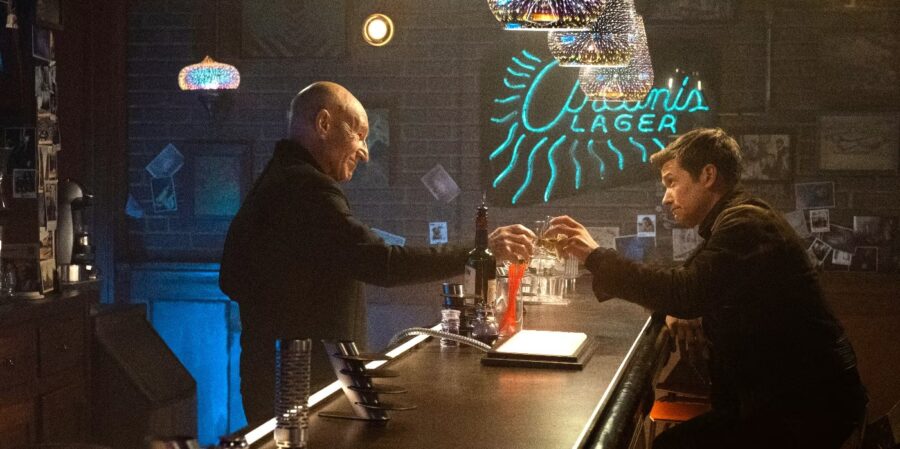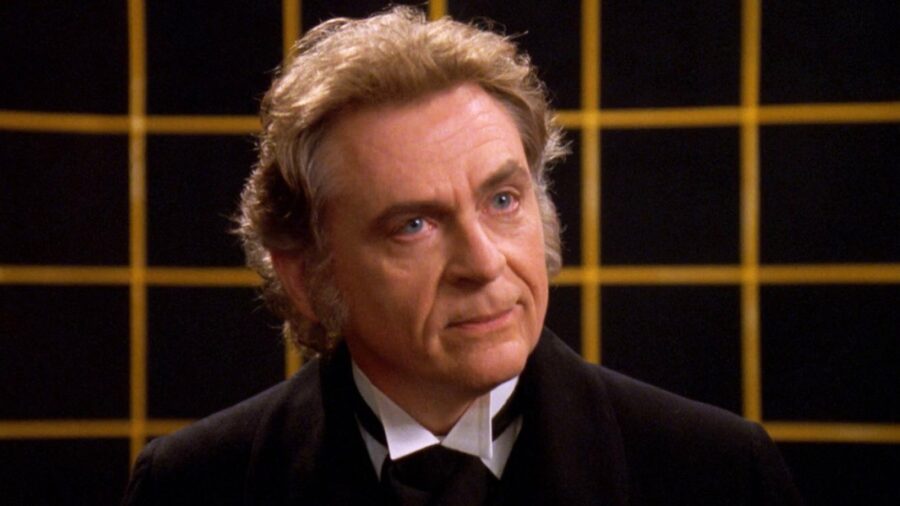How Do Holodecks Work In Star Trek?
We delve into how the fascinating holodecks work in Star Trek.

In various episodes of Star Trek, the holodecks are constantly a source of great amusement for the crew and (when something inevitably goes wrong) a source of great peril. However, the more fans witnessed Starfleet’s ability to perfectly simulate any environment they desired in a relatively tiny room, the more fans asked just how the hell this technology was supposed to work. If you’ve been watching eps on Paramount Plus and asking the same question, you don’t have to ring up Engineering on your comm badge…we’ve got a full breakdown of how everything in a Star Trek holodeck actually works.
Ironically enough, Star Trek’s holodecks’ simplest aspect is how the actual holograms work. Most of the time, these are simple three-dimensional holograms that cover the entirety of the holodeck room.
Once the arch (the one-way entrance and exit to the holodeck) is covered by the holograms in question, the users inside have a room that looks like whatever environment they wish to create, like the forest that Riker finds Commander Data exploring in the pilot episode “Encounter At Farpoint.”

Throughout Star Trek, most of what we (and the crew) see inside the holodecks is hollow (no pun intended) light. However, each holodeck carries with it a built-in replicator that can create a variety of objects the crew can interact with, and since these things are replicated, they can be taken out of the holographic simulation. This is the reason why we saw a snowball fly out of the holodeck and into the corridor when Wesley Crusher and his friend were having a snowball fight in the episode “Angel One.”
Because Star Trek’s holodecks have replicators inside of them, some members of Starfleet use them to create some of their favorite restaurants and bars from Earth and various other planets. For example, Tom Paris recreated his favorite watering hole from his Starfleet Academy days, Chez Sandríne, in the episode “The Cloud,” and it became a favorite hangout for crew members who were presumably sick of hanging out in the mess hall with Neelix.

And in the final season of Picard, we see Jack Crusher simulate the Earthbound location of Guinan’s Ten Forward bar so he can have an awkward hang with dad in the episode “Seventeen Seconds.”
Another big question Star Trek fans always have about the holodeck is how the small holodeck room can recreate large vistas, including those much larger than the ship itself. The answer is that the holodeck has invisible forcefields that can be used to create a space-age “treadmill” effect, meaning that characters can be physically walking without really moving, and the holodeck provides a simulation of the environment moving past them.
These forcefields can also conveniently simulate things like inclines for when characters are doing anything from climbing the stairs to ascending a hill.
Perhaps the most impressive thing about Star Trek’s holodecks is that they are powered by an artificial intelligence much more advanced than anything we can imagine. While it’s possible for someone to create an intensely scripted simulation (like we see Boimler try to do in the Lower Decks episode “Crisis Point”), the “default” is for the holodeck to provide convincing AI on the fly that is suited to the environment and user request.

This is perhaps best illustrated by the holographic woman Minuet that Riker creates in “11001001:” he specifies her physical appearance, but the computer provides a fun and flirty personality all on its own (though it had major–and temporary–help from the tech-savvy Bynars).
In Star Trek, the holodecks aren’t designed to create anything truly sentient, but this hasn’t kept it from happening, both by design and by accident. In Star Trek: Deep Space Nine, Bashir is able to create a sentient Vegas entertainer named Vic Fontaine in the episode “His Way,” though Bashir’s genetically-enhanced brain probably helped him pull that off.

And in The Next Generation, Geordi LaForge accidentally created a sentient Professor Moriarty in “Elementary, Dear Data” simply by asking the computer to come up with a program that could actually challenge Data’s keen android mind.
By default, Star Trek’s holodecks have safety protocols engaged, which means those using them can’t kill themselves by accident. Therefore, if a gangster were to shoot Captain Picard during his Dixon Hill simulations, the bullets normally wouldn’t kill him (though when an alien probe turned the protocols off, a visiting historian was actually hurt by a bullet in “The Big Goodbye”).
Incidentally, senior officers and others with the right access codes usually have the ability to turn these safety protocols off, but most of the time, it’s simple technological malfunctions that end up trapping the crew inside a potentially lethal holographic simulation.












